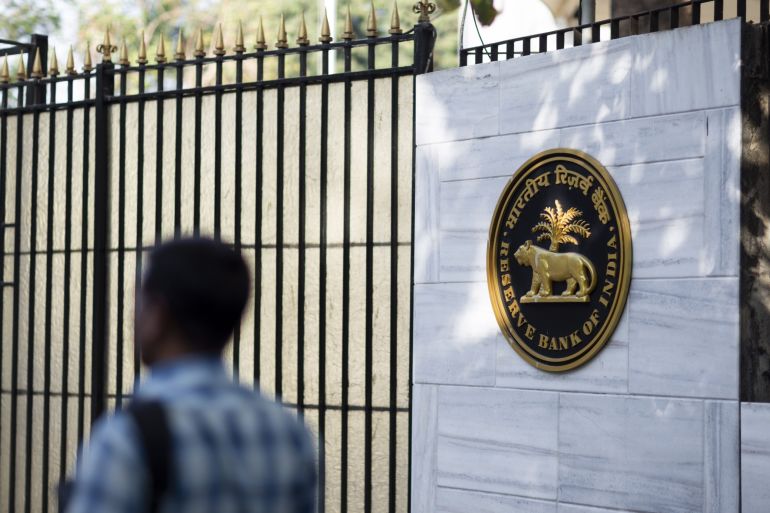India’s central bank keeps benchmark rate at record low
Reserve Bank of India’s six-member Monetary Policy Committee votes to hold the benchmark repurchase rate at 4 percent.

India’s central bank kept borrowing costs at a record low for an eleventh straight meeting, while warning of impacts from the risks of Russia’s war in Ukraine and pledging to remove some liquidity in the banking system.
The Reserve Bank of India’s six-member Monetary Policy Committee voted to hold the benchmark repurchase rate at 4%, as predicted by all 36 economists surveyed by Bloomberg.
Keep reading
list of 4 itemsJapan plans to gradually reduce coal imports from Russia
Is a global recession coming? In US, China risks are mounting
‘We’re no longer humans behind bars’
The panel decided to keep its accommodative stance, Governor Shaktikanta Das said Friday, while focusing on withdrawal of banking liquidity accommodation “to ensure that inflation remains within the target going forward while supporting growth.”
A recovery in Asia’s third-largest economy is facing fresh challenges from the war in Ukraine and Covid-19 lockdowns in China, which risk exacerbating a global supply squeeze and price pressures. Das on Friday said the global economy is seeing “tectonic shifts” from the war and extreme volatility in commodity and financial markets.
“Caught in the cross current of multiple headwinds, our approach needs to be cautious but proactive in mitigating the adverse impact on India’s growth, inflation and financial conditions,” Das said.
India’s central bank on Friday also announced a new tool that will enable the monetary authority to soak up excess cash in the banking system as part of its liquidity normalization efforts.
India’s 10-year bond yield rose to 7%, the highest since 2019, as the central bank raised its inflation forecast and narrowed the interest rate corridor with the new mechanism. Meanwhile the benchmark S&P BSE Sensex was little changed after swinging between gains and losses during the policy announcement.
“The RBI has undertaken a normalization of the corridor effectively, and is preparing the ground for further normalization in coming months,” said Rahul Bajoria, an economist at Barclays Plc.
The decision comes as many central bank peers begin tightening, led by the Federal Reserve, which is expected to continue raising rates when it meets in May. Policymakers globally have started shifting their focus toward fighting inflation as recoveries from the pandemic begin to take hold.
The central bank on Friday raised its inflation forecast to 5.7% for the fiscal year that started April 1, up from its 4.5% in February. The central bank also sees gross domestic product growth during the year at 7.2%, compared with a previous outlook of 7.8%.
The RBI’s inflation forecast was a key focus heading into Friday’s decision, after drawing criticism from some economists after its last meeting in February for being too relaxed on consumer prices. Russia’s invasion of Ukraine since then has piled on more potential pressures, including a surge in oil prices, leading Das last month to acknowledge the forecast needed to be reworked. He said Friday that the RBI’s new growth outlook assumes crude at $100 a barrel.